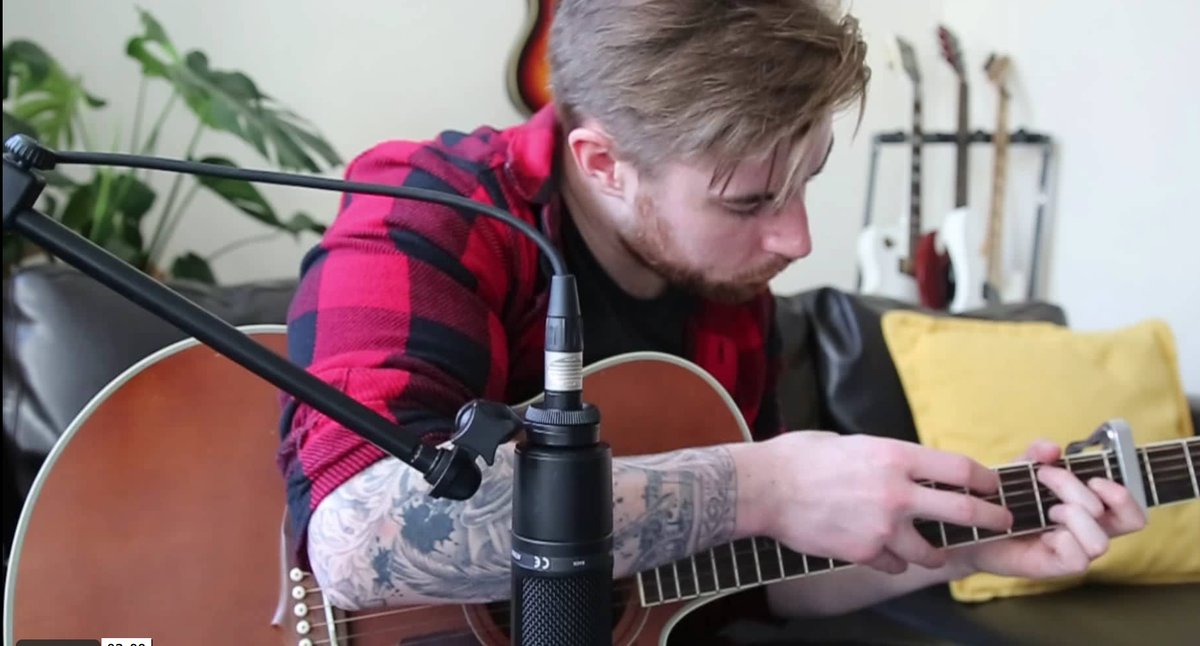Playing the Acoustic guitar also improves your Electric playing
4 reasons why playing the Acoustic guitar, also improves your Electric playing!
I’ve been playing guitar for 12 years now! Unlike many beginner guitarists I started learning Electric guitar first, it was a couple of years later before I owned my first Acoustic. Like any 13 year-old who’d just got a new guitar, I was immediately obsessed with it and couldn’t put it down. As a result, I neglected my Electric guitar for a bit whilst I happily strummed along to the likes of Oasis and crew. As you do.
When I eventually got tired of going through open chords and picked up my Electric again, I noticed something… my Electric playing had massively improved. I realised that playing the Acoustic had given some major benefits to my skills on the Electric.12 years on, I still practice and perform on them both and in this article I’m going to explain some of the reasons I think the Acoustic has vastly improved my Electric playing and my musicianship in general.
Stamina
All you have to do is look at an Acoustic and an Electric guitar next to each other to notice that the Acoustic is just physically bigger. It has a wide hollowed body, thicker neck and usually thicker strings. So it is no surprise it takes a bit more physicality to play it. Sometimes we have to press down on the frets harder to get that warm tone, other times we have to play endless bar chords until our forearm burns. However, this is a productive pain and will stand you in good stead.
Developing stamina is one of the toughest challenges a lot of guitarists face, especially if you don’t get time to play as often as you’d like. Think of playing the Electric guitar as working out and the acoustic guitar as working out with a weighted vest on. It might hurt at the time, but the harder you workout the quicker you’ll get into shape. In my experience, after practicing on my Acoustic then going back to the Electric, my fingers are far more nimble and I can play for way longer on both. I also find playing my Acoustic for 10 minutes or so before starting on the Electric is a great way to warm up!

Rhythm
Playing Acoustic guitar has without a doubt, improved my rhythm playing and ability to keep tempo. Unlike the Electric guitar where you can find yourself playing lots of lead guitar lines and solos, the Acoustic guitar is more widely used as an accompaniment. So as nice as feeling your way through a melodic, tasteful solo on the acoustic can be, a lot of the time you will be providing rhythm guitar… and this should excite you!
One of the things I’ve enjoyed most about playing my Acoustic is discovering more ways to create interesting and intricate rhythms in my playing. If you’re like me, you’ll have those moments where you see someone do something amazing and become instantly inspired. One of those moments for me was seeing Andy McKee play his finger-style song Drifting (if you haven’t already, check it out) and being blown away by the way he created so much percussion and groove from his acoustic guitar. I instantly ran to my guitar and started working on my finger picking, trying to perfect the percussive thumb slap and integrate it into my patterns. The heavier gauge strings and hollowed body of the acoustic really helped me lock into the groove.
After some time I moved these techniques over to my Electric. This is where things got interesting. I found that using my newly perfected, percussive thumb slap through a nice warm overdrive gave an amazing feel for lots of playing styles like Blues, Jazz, Soul, RnB and Hip-hop. Also, as my fingerpicking improved, it allowed me to tackle techniques that I had struggled with before, like hybrid picking (using your plectrum and fingers at the same time).
Adjust your musical mindset
I think what attracted me to the Electric guitar is the plethora of sounds you can create from it. There are so many unique pedals, effects and techniques you can use to be creative with your sound, but on the flip side, this is also a reason I love playing the acoustic guitar as well. Its simplicity. Sure, you can run Acoustics through pedals and can have great fun doing so, but at its core, the tone of the acoustic guitar is undeniably unique; like comparing a synthesiser to a grand piano.
So to harness the tone, you have to play with other considerations. While I play my acoustic I find myself being much more aware of how I’m sustaining notes, using extreme dynamics, thinking more melodically in my musical ideas and doing anything I can to maximise the versatility in the sound. I also find due to the acoustic nature of the guitar and the fact you can hear every dead note, scratch and scuff clear as day, it has trained into me a perfection for clarity. Applying all this to my electric playing has been incredibly productive. Instead of increasing the reverb or adding more gain to hide potential scuffs behind the grit, it has made my playing more accurate and most of all, confident. Something as simple (and maybe obvious) as that has really progressed my playing.
Versatility
Amongst all the other reasons discussed, for me personally, this has had the biggest benefit. Learning the acoustic guitar pointed me in the direction of a lot of new music. Exploring more acoustic dominated genres such as country, folk, classical etc. was not only great fun, but increased my musical knowledge and the understanding of how different styles are written. As a working guitarist, I’ve found it incredibly useful to be what I refer to as a musical chameleon. By learning how to play in different styles and knowing what techniques to use at the right time, It has given me the confidence to blend in to all kinds of genres and as a result, all kinds of opportunities.
So all in all, I credit a lot to my acoustic guitar. It’s taught me things about playing that I don’t think I would have discovered otherwise, at least not as quickly. The other thing to remember is that almost everything is transferable too, in one way or another. Whether it adds rhythmic patterns, melody ideas, chord progressions etc. to your playing, or makes you think of different ways to phrase and approach music, I’m positive you will see the benefits in your playing.
By Adam Ward







